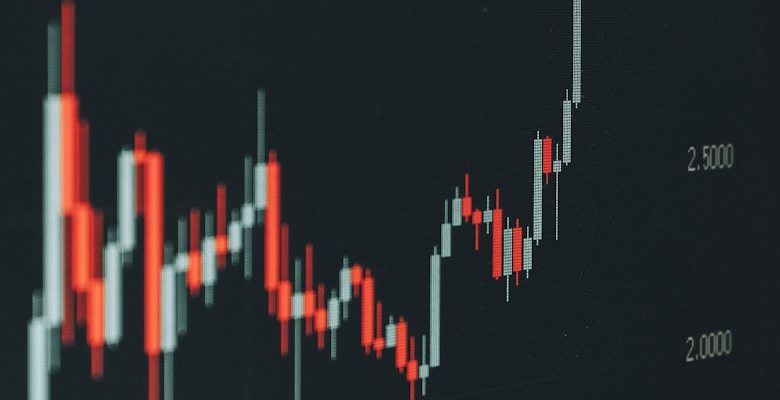How to Analyze Token Metrics for Investment Decisions

- Understanding the importance of token metrics in investment decisions
- Key token metrics to consider when evaluating a potential investment
- Analyzing token supply and distribution for investment success
- The role of market capitalization in token analysis
- Examining trading volume and liquidity for informed investment choices
- Using historical data to forecast future token performance
Understanding the importance of token metrics in investment decisions
Understanding the significance of token metrics is crucial when making investment decisions in the cryptocurrency market. Token metrics provide valuable insights into the potential profitability and sustainability of a digital asset, helping investors make informed choices. By analyzing token metrics, investors can assess various aspects of a token, such as its market cap, circulating supply, trading volume, and price performance.
One of the key metrics investors should consider is the market capitalization of a token. Market cap gives an indication of a token’s overall value and can help investors gauge its potential for growth. Additionally, examining the circulating supply of a token is essential as it can impact its scarcity and, ultimately, its price trajectory.
Another important metric to evaluate is the trading volume of a token. High trading volume indicates a high level of market activity and liquidity, making it easier for investors to buy and sell the token. Additionally, analyzing the price performance of a token over time can provide insights into its historical growth trends and potential future performance.
Overall, understanding and analyzing token metrics play a crucial role in making well-informed investment decisions in the cryptocurrency market. By carefully evaluating various metrics, investors can assess the potential risks and rewards associated with a particular token, helping them make sound investment choices.
Key token metrics to consider when evaluating a potential investment
When evaluating a potential investment in tokens, there are several key token metrics that investors should consider. These metrics can provide valuable insights into the token’s potential for growth and profitability. One important metric to consider is the market capitalization of the token. Market capitalization is calculated by multiplying the current price of the token by the total number of tokens in circulation. A high market capitalization can indicate that the token is widely adopted and has a strong community of supporters.
Another important metric to consider is the trading volume of the token. Trading volume refers to the total number of tokens that are bought and sold on a daily basis. High trading volume can indicate that there is a strong demand for the token and that it is actively traded on exchanges. This can be a positive sign for investors, as it suggests that the token is liquid and easy to buy or sell.
One metric that is often overlooked but can be crucial for evaluating a token is the token’s circulating supply. The circulating supply refers to the total number of tokens that are currently in circulation and available for trading. A low circulating supply can create scarcity and drive up the price of the token, while a high circulating supply can lead to dilution and lower prices.
In addition to these metrics, investors should also consider the token’s use case and utility. Tokens that have a clear use case and are integral to the functioning of a platform or ecosystem are more likely to retain their value over time. It is important to research the project behind the token and understand how the token is intended to be used.
By considering these key token metrics, investors can make more informed decisions when evaluating potential token investments. It is important to conduct thorough research and analysis before investing in any token to mitigate risks and maximize potential returns.
Analyzing token supply and distribution for investment success
When considering an investment in a token, analyzing the token supply and distribution is crucial for assessing its potential success. Understanding how many tokens are in circulation, how they are distributed, and what percentage is held by the team and early investors can provide valuable insights into the token’s stability and long-term viability.
Investors should pay attention to the total token supply to evaluate the potential for scarcity and demand. A limited token supply can drive up the value of the token over time, making it a more attractive investment opportunity. Additionally, examining how tokens are distributed among various stakeholders, including the team, advisors, and community members, can give an indication of how decentralized the project is and whether there is a risk of centralization.
It is also essential to look at the token distribution schedule to understand how new tokens will enter the market over time. A well-thought-out distribution plan can help prevent inflation and maintain the token’s value. Conversely, a distribution schedule that floods the market with new tokens can lead to price depreciation and investor dissatisfaction.
The role of market capitalization in token analysis
Market capitalization plays a crucial role in the analysis of tokens when making investment decisions. It is a key metric that provides insight into the overall value and size of a cryptocurrency. Market capitalization is calculated by multiplying the current price of a token by the total number of tokens in circulation.
A high market capitalization indicates a large amount of investor interest and confidence in a token, while a low market capitalization may signal higher volatility and risk. Investors often use market capitalization as a factor in determining the potential for growth and stability of a token in the market.
When analyzing token metrics, it is important to consider market capitalization along with other factors such as trading volume, circulating supply, and price history. By looking at these metrics in combination, investors can make more informed decisions about which tokens to invest in based on their risk tolerance and investment goals.
In conclusion, market capitalization is a valuable metric for evaluating tokens and should be used in conjunction with other metrics to assess the potential for investment. By understanding the role of market capitalization in token analysis, investors can make more strategic decisions and navigate the cryptocurrency market with greater confidence.
Examining trading volume and liquidity for informed investment choices
When analyzing token metrics for investment decisions, examining trading volume and liquidity is crucial. Trading volume refers to the total number of tokens that have been traded within a specific period, indicating the level of interest and activity in the token. Higher trading volume typically suggests greater market interest and liquidity, making it easier to buy or sell tokens without significantly impacting the price.
Liquidity, on the other hand, refers to how easily a token can be bought or sold in the market without causing a significant price change. Tokens with high liquidity are more attractive to investors as they offer the ability to enter and exit positions quickly. Low liquidity tokens, on the other hand, may experience higher price volatility and potential difficulty in executing trades.
By considering trading volume and liquidity metrics, investors can make more informed decisions about which tokens to invest in. Tokens with high trading volume and liquidity are generally considered less risky and more suitable for trading or investment purposes. On the other hand, tokens with low trading volume and liquidity may require more careful consideration and risk management strategies.
Using historical data to forecast future token performance
One effective way to analyze token metrics for making investment decisions is by utilizing historical data to forecast future token performance. By examining past trends and patterns, investors can gain valuable insights into how a particular token may behave in the future. This analysis can help investors identify potential risks and opportunities associated with a token, allowing them to make more informed investment decisions.
When analyzing historical data, investors should pay attention to key metrics such as price movements, trading volume, market capitalization, and token circulation. By understanding how these metrics have evolved over time, investors can better predict how a token may perform in the future. For example, if a token has shown consistent growth in price and trading volume over the past year, it may indicate a strong potential for future growth.
Investors should also consider external factors that may influence a token’s performance, such as market trends, regulatory changes, and technological developments. By taking these factors into account, investors can make more accurate predictions about how a token may behave in different scenarios. Additionally, investors should be wary of relying too heavily on historical data alone, as past performance is not always indicative of future results.
In conclusion, using historical data to forecast future token performance can be a valuable tool for investors looking to make informed investment decisions. By analyzing past trends and patterns, investors can gain valuable insights into how a token may behave in the future, allowing them to identify potential risks and opportunities. However, it is important to consider external factors and not rely solely on historical data when making investment decisions.



